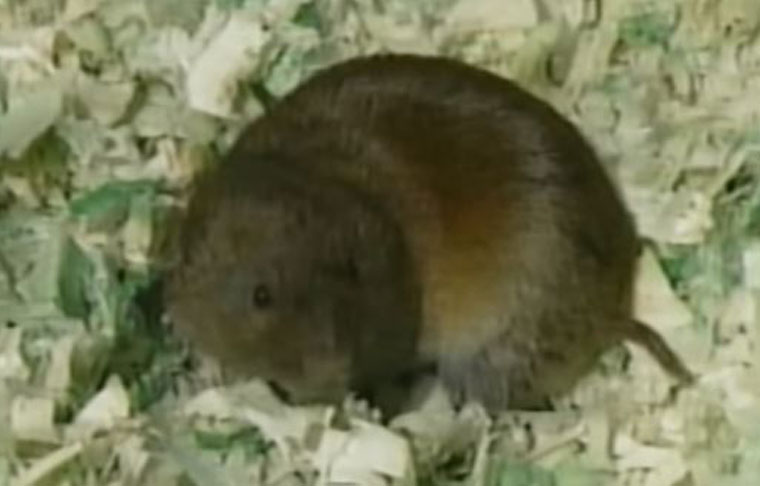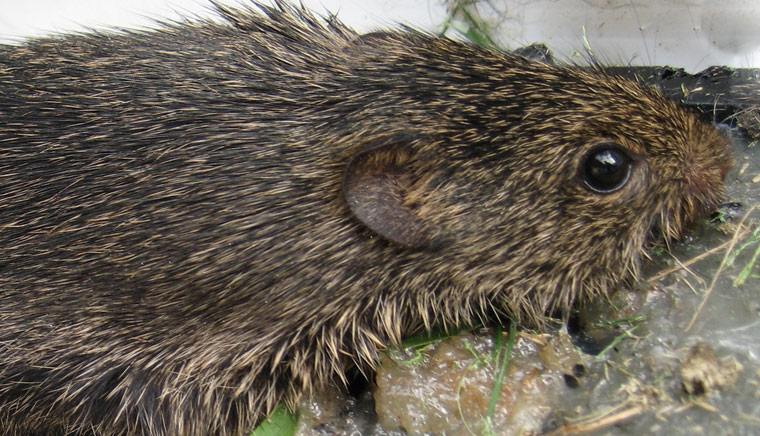-
info@aaanimalcontrol.com
Call us for help in your town
Humane Wildlife Education
Trapping Vole Tips
Need vole removal in your hometown? We service over 500 USA locations! Click here to hire us in your town and check prices - updated for year 2020.
If you are looking to trap voles in your home then where your solution starts is by understanding that these creatures are very similar to mice. There are some differences between the two species of animal but, for the most part, they are quite similar to one another. What this means is that the same kind of measures you would take to trap a mouse you could use to trap a vole.

Where you start is by determining whether your solution is to be a permanent one or if you simply want to capture the critters. If you are looking for the more permanent option, meaning death, then there are several traps out there that will handle your problem.
Most of us are quite familiar with the mousetrap. This is nothing more than a metal or plastic base, with a metal bar that is attached to it. You place a piece of bait on the mechanism, and when the vole or mouse pulls off the bait, it unleashes the trap in the bar crushes the animal. In a matter of a second your problem is resolved.
In this day and age there are much more sophisticated kinds of traps that are available. While still using the same principles, some add such things as teeth to the snapping mechanism, ensuring that the animal has no chance of survival. Others use different means to catch the vole onto it, such as a glue, so that it is unable to get away. Any one of these can work quite well for you if you are looking for a permanent solution.
However, you may be looking to simply capture the animal so it can be let go outside. If this is the option you are choosing, then you need to look for some kind of commercial trap that will give you the ability to catch the vole. There are several great ones out there that were quite simply.
There is a door mechanism that is left open, allowing the vole to get inside. Inside the cage you place some kind of bait which you know will entice the vole to enter the trap. One of the very best ones of these to use is peanut butter, primarily because it is difficult to get off and so the vole has to work at it for a little while ensuring that it will release the trap mechanism. Once it has, the door closes in the vole is unable to get out. Now, all you have to do is take the cage outside, open the door, and let the vole head out into the wild.
Your trap issue is really nothing more than a decision on your part of what you like to be the final disposition of your vole problem. Be aware that if you decide to take the more humane approach and let the vole go then you want to ensure that you do not give it the ability to get right back into your house.
How to Trap Voles
Need wildlife removal in your hometown? We service over 500 USA locations! Click here to hire us in your town and check prices - updated for year 2020.When you look at trapping wild animals, there are certain other factors that you'll need to take into consideration. There's the risk you might get scratched, bitten, or injured in another way when you're dealing with unpredictable wild animals that are likely to be even more scared than you are. Then there's knowing what to do with the animal after you have captured it, which is always much more complicated than the practice of actually trapping it in the first place, especially when you look into the legalities across different US States. Then, of course, you've got the disease threat. With any wild animal, coming up close and personal means putting yourself in direct danger. You don't even need to come into contact with the animal at all in some cases, just its droppings and urine spreading all sorts of disease-causing pathogens.

Hantavirus
Have you heard of this? If you've been handling or coming into close quarters with a vole, you should know about it. Close to forty percent of all patients who get it will die, and mice and boles are two of the main spreaders of the disease.
This disease is not one that experts and scientists know an awful lot about, which makes it even more deadly. They're not sure of the incubation time, for example, and this means how long the disease-bearing pathogen is present in your body before it starts to do damage or cause symptoms.
The disease is usually passed from rodents to humans, as well as a string of other animals, by way of contaminated waste matter — droppings and urine. Even the saliva of the creature can be contaminated, however, and this is why we suggest never getting too close to any wild creature, let alone a vole.
The earliest symptoms of the disease seem to be things like muscle aches, and around half of all hantavirus patients will also experience other symptoms, including digestive and abdominal problems, dizziness, headaches, fever and chills.
About a week to two weeks after the earlier symptoms of the disease show up, things take a very dramatic turn for the worse if you have not been to see a doctor and received treatment. Hantavirus causes the lungs to fill up with fluid and, if left untreated, you will essentially drown. You will find it difficult to breath, and there will be lots of coughing. It is not a pleasant disease (if any disease could be called pleasant), and as we've mentioned, the mortality rate is close to 40%.
The diseases that rodents, such as voles, rats and mice can spread extend further than this deadly disease too. Rat bite fever is another one that should definitely do your research on, a disease that has varying symptoms dependent on the strain of bacteria you pick up. Leptospirosis is another common disease transported among wild animals, as is salmonellosis, and also Weil's disease, which is a severe form of leptospirosis that causes severe and deadly symptoms and happens in 1 in 10 cases of the disease.
In short, handling these wild creatures is not a good idea and we would highly recommend against it. You should only consider trapping voles if you have everything you need to do it, and this will include a number of protective items. You will need a body suit, unless you want to throw your clothes out after you're done, and you should also look at boot or shoe coverings, unless you're throwing them out too, or you're going to give them a good cleaning with some strong disinfectant and antibacterial. Eye protection, thick, rubber gloves, plenty of cleaning equipment, and also whatever you might need to repair the damage these creatures have caused, and to prevent them from coming back …
It's a long job, and one that needs the entire thing to be completed in order to successfully keep these pests at bay. If you just pay attention to the trapping side of things, not only are you potentially putting yourself and your family in danger, your'e also not solving the problem at all. More voles will come, and after them, more and larger wild animals too. This is a job you'll want to get right, first time.
For more information, you may want to click on one of these guides that I wrote:
How To Guide: Who should I hire? - What questions to ask, to look for, who NOT to hire.
How To Guide: do it yourself! - Advice on saving money by doing wildlife removal yourself.
Guide: How much does wildlife removal cost? - Analysis of wildlife control prices.
Animals in the attic - read about the common species.
Noises in the attic - how to identify critters by their sounds.


















